Clean Energy
Tracked: The U.S. Utilities ESG Report Card
The following content is sponsored by the National Public Utilities Council
Tracked: The U.S. Utilities ESG Report Card
This was originally posted on July 15, 2021, on Visual Capitalist.
As emissions reductions and sustainable practices become more important for electrical utilities, environmental, social, and governance (ESG) reporting is coming under increased scrutiny.
Once seen as optional by most companies, ESG reports and sustainability plans have become commonplace in the power industry. In addition to reporting what’s needed by regulatory state laws, many utilities utilize reporting frameworks like the Edison Electric Institute’s (EEI) ESG Initiative or the Global Reporting Initiative (GRI) Standards.
But inconsistent regulations, mixed definitions, and perceived importance levels have led some utilities to report significantly more environmental metrics than others.
How do U.S. utilities’ ESG reports stack up? This infographic from the National Public Utilities Council tracks the ESG metrics reported by 50 different U.S. based investor-owned utilities (IOUs).
What’s Consistent Across ESG Reports
To complete the assessment of U.S. utilities, ESG reports, sustainability plans, and company websites were examined. A metric was considered tracked if it had concrete numbers provided, so vague wording or non-detailed projections weren’t included.
Of the 50 IOU parent companies analyzed, 46 have headquarters in the U.S. while four are foreign-owned, but all are regulated by the states in which they operate.
For a few of the most agreed-upon and regulated measures, U.S. utilities tracked them almost across the board. These included direct scope 1 emissions from generated electricity, the utility’s current fuel mix, and water and waste treatment.
Another commonly reported metric was scope 2 emissions, which include electricity emissions purchased by the utility companies for company consumption. However, a majority of the reporting utilities labeled all purchased electricity emissions as scope 2, even though purchased electricity for downstream consumers are traditionally considered scope 3 or value-chain emissions:
- Scope 1: Direct (owned) emissions.
- Scope 2: Indirect electricity emissions from internal electricity consumption. Includes purchased power for internal company usage (heat, electrical).
- Scope 3: Indirect value-chain emissions, including purchased goods/services (including electricity for non-internal use), business travel, and waste.
ESG Inconsistencies, Confusion, and Unimportance
Even putting aside mixed definitions and labeling, there were many inconsistencies and question marks arising from utility ESG reports.
For example, some utilities reported scope 3 emissions as business travel only, without including other value chain emissions. Others included future energy mixes that weren’t separated by fuel and instead grouped into “renewable” and “non-renewable.”
The biggest discrepancies, however, were between what each utility is required to report, as well as what they choose to. That means that metrics like internal energy consumption didn’t need to be reported by the vast majority.
Likewise, some companies didn’t need to report waste generation or emissions because of “minimal hazardous waste generation” that fell under a certain threshold. Other metrics like internal vehicle electrification were only checked if the company decided to make a detailed commitment and unveil its plans.
As pressure for the electricity sector to decarbonize continues to increase at the federal level, however, many of these inconsistencies are roadblocks to clear and direct measurements and reduction strategies.
The National Public Utilities Council is a collaborative body of industry experts coming together to solve decarbonization challenges in the power sector and the proud sponsor of the Decarbonization Channel.
Clean Energy
Visualized: The Four Benefits of Small Modular Reactors
What advantages do small modular reactors offer compared to their traditional counterparts?
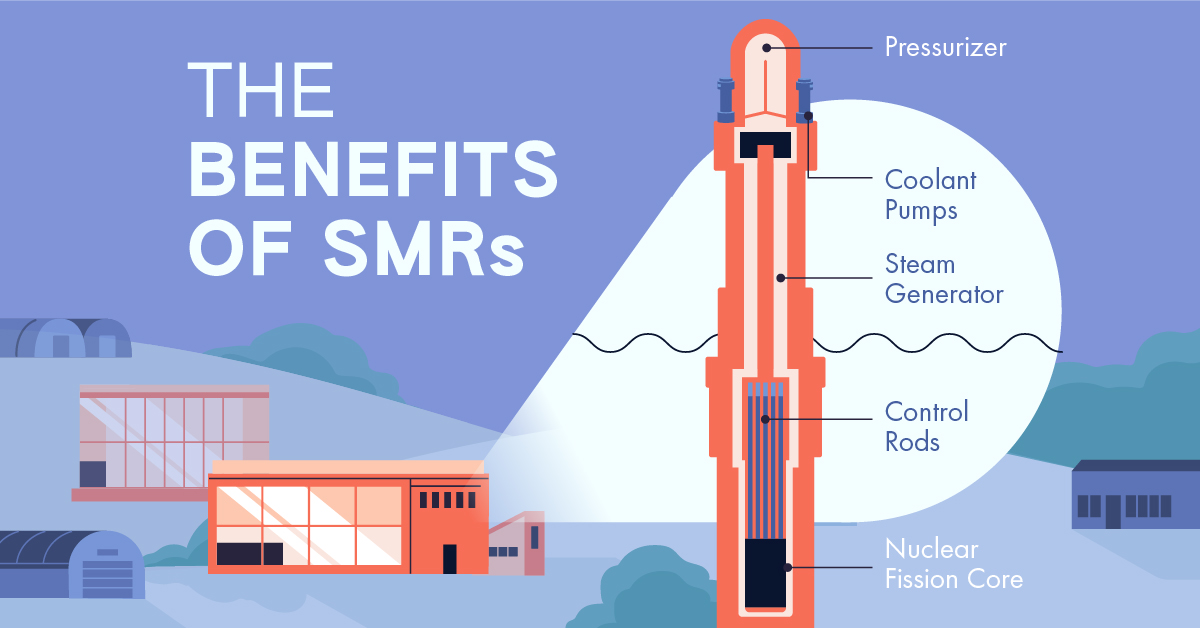
Visualized: The Four Benefits of Small Modular Reactors
Nuclear power has a crucial role to play on the path to net zero. Traditional nuclear plants, however, can be costly, resource-intensive, and take up to 12 years to come online.
Small modular reactors (SMR) offer a possible solution.
Created in partnership with the National Public Utilities Council, this infographic explores some of the benefits SMRs can offer their traditional counterparts. Let’s dive in.
The Four Key Benefits of SMRs, Explained
An SMR is a compact nuclear reactor that is typically less than 300 megawatts electric (MWe) in capacity and manufactured in modular units.
Here are some of the benefits they offer.
#1: Lower Costs
SMRs require a lower upfront capital investment due to their compact size.
SMRs can also match the per-unit electricity costs of traditional reactors due to various economic efficiencies related to their modular design, including design simplification, factory fabrication, and potential for regulatory harmonization.
#2: Quicker Deployment
Traditional nuclear plants can take up to 12 years to become operational. This is primarily due to their site-specific designs and substantial on-site labor involved in construction.
SMRs, on the other hand, are largely manufactured in factories and are location-independent, which minimizes on-site labor and expedites deployment timelines to as little as three years. This means they can be deployed relatively quickly to provide emissions-free electricity to the grid, supporting growing electricity needs.
#3: Siting Flexibility and Land Efficiency
SMRs have greater siting flexibility compared to traditional reactors due to their smaller size and modular design. In addition, they can utilize land more effectively than traditional reactors, yielding a higher output of electrical energy per unit of land area.
| Rolls-Royce SMR, UK (Proposed) | Median-Sized U.S. Nuclear Plant | |
|---|---|---|
| Capacity | 470 MW | 1,000 MW |
| Area Requirement | 10 Acres* | 832 Acres |
| Land/Space Efficiency | 47 MW/Acre | 1.2 MW/Acre |
*Estimated area requirement
Given their flexibility, SMRs are also suitable for installation on decommissioned coal power plant sites, which can support the transition to clean electricity while utilizing existing transmission infrastructure.
#4: Safety
SMRs have simpler designs, use passive cooling systems, and require lower power and operating pressure, making them inherently safer to operate than traditional reactors.
They also have different refueling needs compared to traditional plants, needing refueling every 3–7 years instead of the 1–2 years typical for large plants. This minimizes the transportation and handling of nuclear fuel, mitigating the risk of accidents.
The Road Ahead
As of early 2024, only five SMRs are operating worldwide. But with several other projects under construction and nearly 20 more in advanced stages of development, SMRs hold promise for expanding global emission-free electricity capacity.
With that said, certain obstacles remain for the wide-scale adoption of SMRs in the United States, which was particularly apparent in the 2023 cancellation of the NuScale SMR project.
To fully realize the benefits of SMRs and advance decarbonization efforts, a focus on financial viability, market readiness, and broader utility and public support may be essential.
Learn how the National Public Utilities Council is working toward the future of sustainable electricity.
Clean Energy
The $3 Trillion Clean Energy Investment Gap, Visualized
In this graphic, we explore the $3 trillion clean energy investment gap visualized by sector, according to BloombergNEF data.
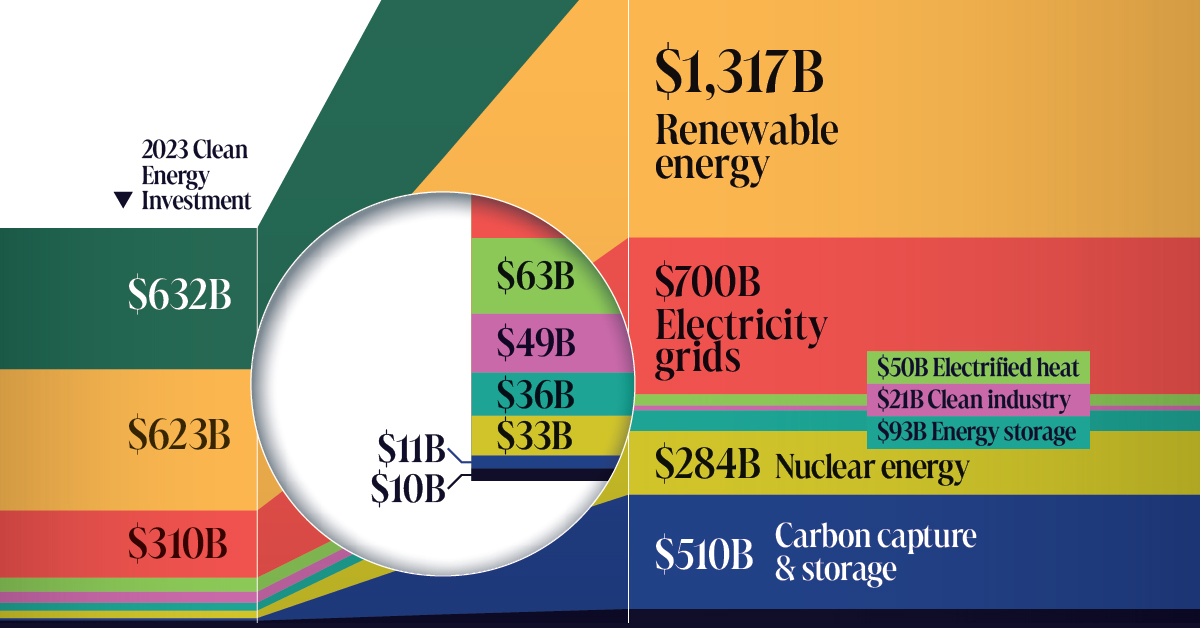
The $3 Trillion Clean Energy Investment Gap, Visualized
Global investment in the clean energy transition grew by 17% in 2023, showing resilience despite geopolitical tensions, high interest rates, and inflation.
But was it enough to keep the world on track to hit net zero by 2050?
To answer this question, we compare 2023 clean energy investment by sector with what’s annually needed to reach net zero by 2050, in partnership with the National Public Utilities Council.
The Investment Gap, By Sector
According to BloombergNEF data, annual global investment in the energy transition is at an all-time high. Despite this, only the electrified heat and clean industry sectors are meeting the thresholds necessary to hit net zero by 2050.
| 2023 Investment | Required Annual Investment for Net Zero*, 2024–2030 | Investment Gap | |
|---|---|---|---|
| Electrified transport | $632B | $1,805B | $1,173B |
| Renewable energy | $623B | $1,317B | $694B |
| Electricity grids | $310B | $700B | $390B |
| Electrified heat | $63B | $50B | -$13B |
| Clean industry | $49B | $21B | -$28B |
| Energy storage | $36B | $93B | $57B |
| Nuclear energy | $33B | $284B | $251B |
| Carbon capture and storage (CCS) | $11B | $510B | $499B |
| Hydrogen | $10B | $62B | $52B |
| TOTAL | $1,767B | $4,842B | $3,075B |
*BloombergNEF’s Net-Zero 2050 Scenario
To stay on track for net zero by 2050, the yearly investments in electrified transport, renewable energy, power grids, and energy storage must more than double their current rates for the rest of the decade.
Hydrogen, nuclear, and carbon capture and storage (CCS) have an even steeper hill to climb and must grow 6, 9, and 46 fold, respectively.
The Path Forward
It’s important to note that despite the current annual investment gap of $3T, the clean energy industry continues to exhibit positive trends.
Investment in electrified transport, for instance, surpassed that in renewable energy for the first time in 2023, marking a win for the sector.
Emerging sectors also experienced robust expansion despite being furthest off-target. Investments in hydrogen tripled to $10B, CCS nearly doubled to $11B, and energy storage witnessed a 76% increase to reach $36B in 2023.
These encouraging developments underscore the industry’s potential to drive transformative change and pave the way for a more sustainable and resilient energy landscape in the years ahead.
Learn how the National Public Utilities Council is working toward the future of sustainable electricity.
-
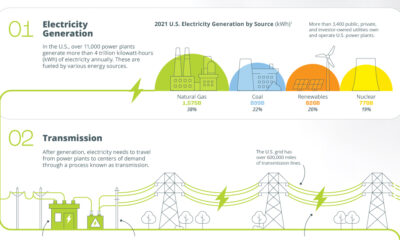
 Electrification1 year ago
Electrification1 year agoVisualized: How the Power Grid Works
-
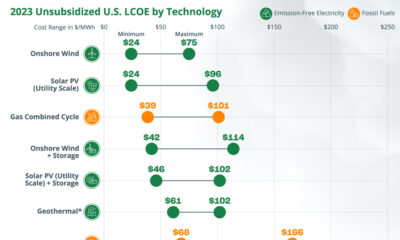
 Energy Shift9 months ago
Energy Shift9 months agoRanked: The Cheapest Sources of Electricity in the U.S.
-
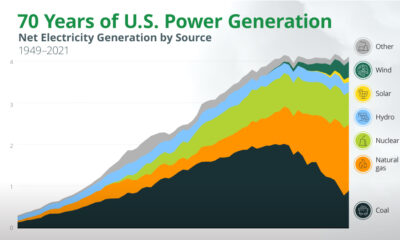
 Energy Shift1 year ago
Energy Shift1 year agoAnimated: 70 Years of U.S. Electricity Generation by Source
-
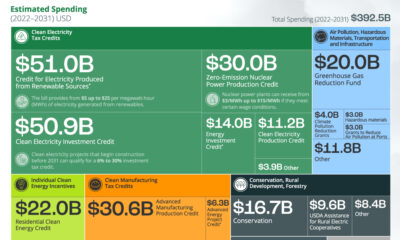
 Clean Energy1 year ago
Clean Energy1 year agoBreaking Down Clean Energy Funding in the Inflation Reduction Act
-
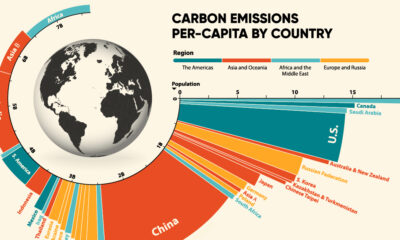
 Emissions1 year ago
Emissions1 year agoVisualizing Global Per Capita CO2 Emissions
-
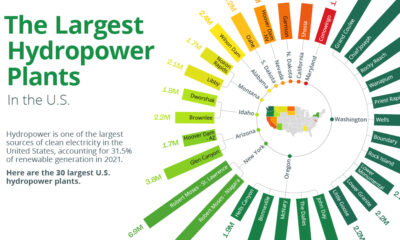
 Clean Energy1 year ago
Clean Energy1 year agoThe 30 Largest U.S. Hydropower Plants
-

 Decarbonization1 year ago
Decarbonization1 year agoThe U.S. Utilities Decarbonization Index
-
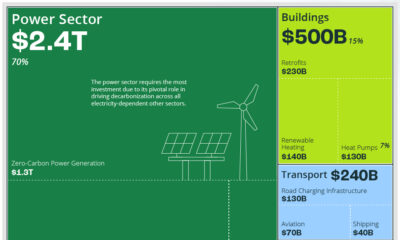
 Clean Energy7 months ago
Clean Energy7 months agoBreaking Down the $110 Trillion Cost of the Clean Energy Transition


